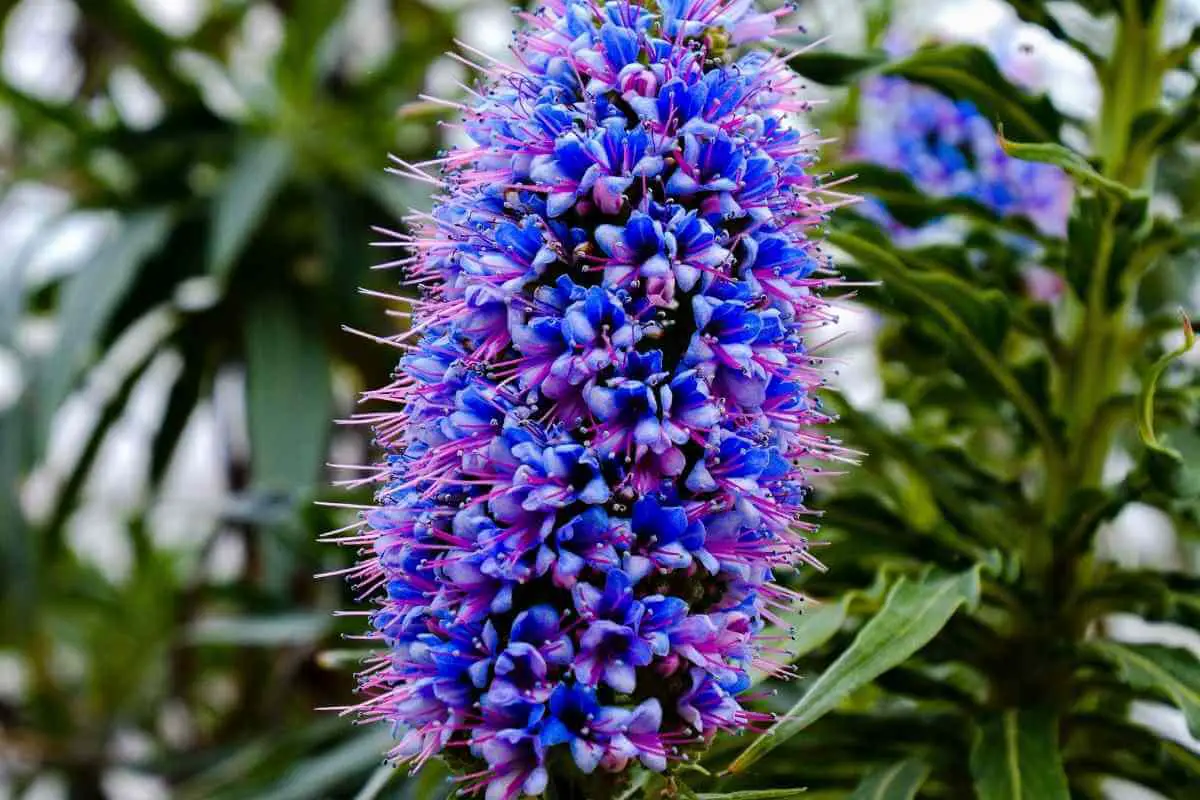If you want hedging and vegetation in your garden that provides you with a distinct border or year-round privacy, you will definitely require trees that don’t lose leaves.
Deciduous trees and shrubs offer great variety and colour but will shed their leaves in autumn through winter, leaving your garden exposed.
Evergreen trees and bushes that keep their leaves year-round provide a very effective barrier that adds shelter to your garden and can keep out eyes, wind and noise.
What to Expect: In this article, we profile 11 trees that don’t lose leaves, making them perfect for privacy. They are perfect for hedging or blocking out specific areas of your garden all year round.
11 Trees That Don’t Lose Leaves (Perfect for Privacy)
Here are 11 trees that don’t lose their leaves.
These popular evergreen trees and shrubs are ideal for beautiful hedging with great longevity that will provide your property and garden with year-round hedging while being easy to maintain.
1. Ceanothus
Ceanothus, also known as the California lilac, is a beautiful evergreen shrub that is a member of the Buckthorn family.
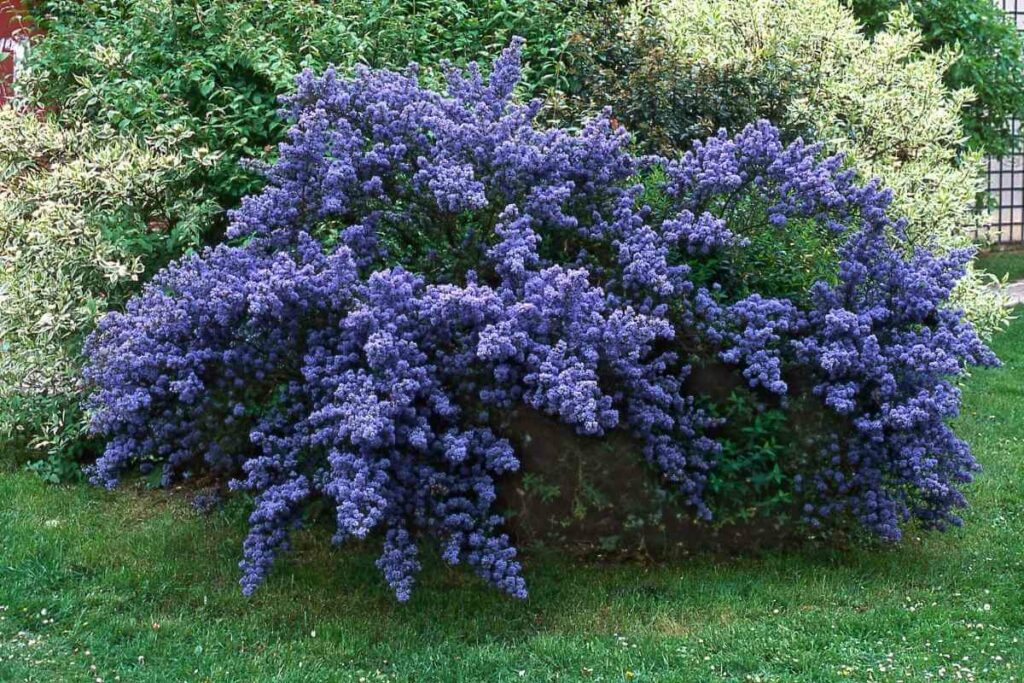
It hails from North America but is often grown as a small tree or bush due to its striking clusters of fragrant flowers that come in a range of shades of blue, purple and pink.
The vast majority of varieties of Ceanothus are evergreen with shiny leaves that are arranged opposite to each other on the stem.
Related species including C. americanus, C. caeruleus, and C. arboreus are grown as ornamental trees or a cheerful, flowering hedge.
Plant California lilacs in a position that is sheltered and sunny. It only needs light pruning after it has flowered.
2. Portuguese Laurel
Portuguese laurel (Prunus lusitanica Angustifolia) is a characterful tree that is perfect for growing a smart and tidy privacy hedge.
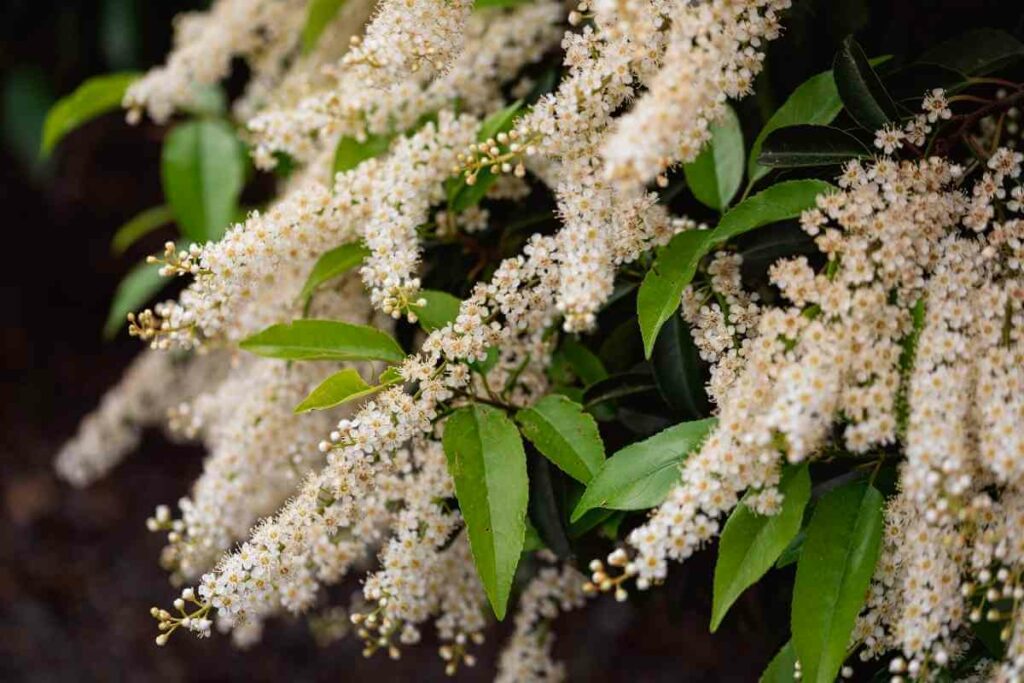
It is a classic evergreen hedging plant that provides all-year dense coverage with its glossy, pointy, dark green leaves that grow from deep-red stems.
It is a great alternative to the classic bay laurel that is a feature of many formal gardens.
This evergreen hedge also produces fragrant white flowers each summer that will attract bees and butterflies to your garden.
As a Result: You’ll also find that birds will want to nest within the foliage and will eat the berries that this shrub yields. It will do well in sheltered locations and chalk soils.
3. Hedge Germander
This evergreen, also known as Teucrium x lucidrys, is drought resistant making it ideal for drier climates with less rainfall and dry, gravelly soil.

It has dark green glossy leaves, with crinkled edges.
Through the summer, the shrub will flower with miniature nectar and pollen-rich pink flowers that attract pollinators.
4. Bay Laurel
Laurus nobilis is the plant from which you can procure an abundant supply of fragrant bay leaves to add to your cooking.

It is an ancient tree that is native to the Mediterranean but has gained popularity with gardeners.
This classic tree for hedging does not lose its broad smooth leaves and can grow to up to 18 meters in height making it perfect for privacy.
The bay laurel is dioecious, carrying male and female pale yellow flowers on the plants.
Laurel produces small black berry-like fruit that can be dried and used as a spice.
5. Box tree
Buxus Sempervirens, the common box is a shrub or tree that is native to subtropical and tropical regions.
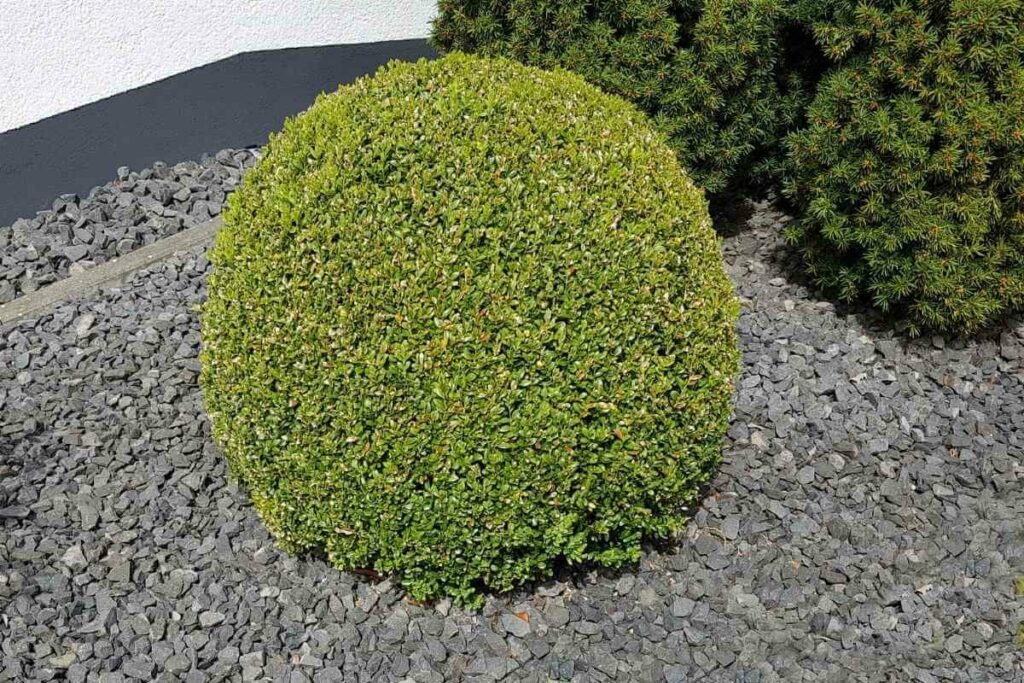
These trees are slow-growing and don’t lose their leaves making them an easy to maintain hedging option for a variety of gardens.
They do not grow higher than 12 to 15 meters in height making them popular for topiary design.
They aren’t frost friendly but will tolerate a UK climate.
Be Careful: The only problem with using the box tree in your landscaping is that the caterpillars of Cydalima perspectalis, a pest species recently introduced to the UK can devastate box hedges.
6. Holly
Holly (Ilex aquifolium) is the festive evergreen tree that is well known for its use in hedges.
Not only does it provide dense screening and privacy, but the glossy green spiky leaves are an effective intruder deterrent.
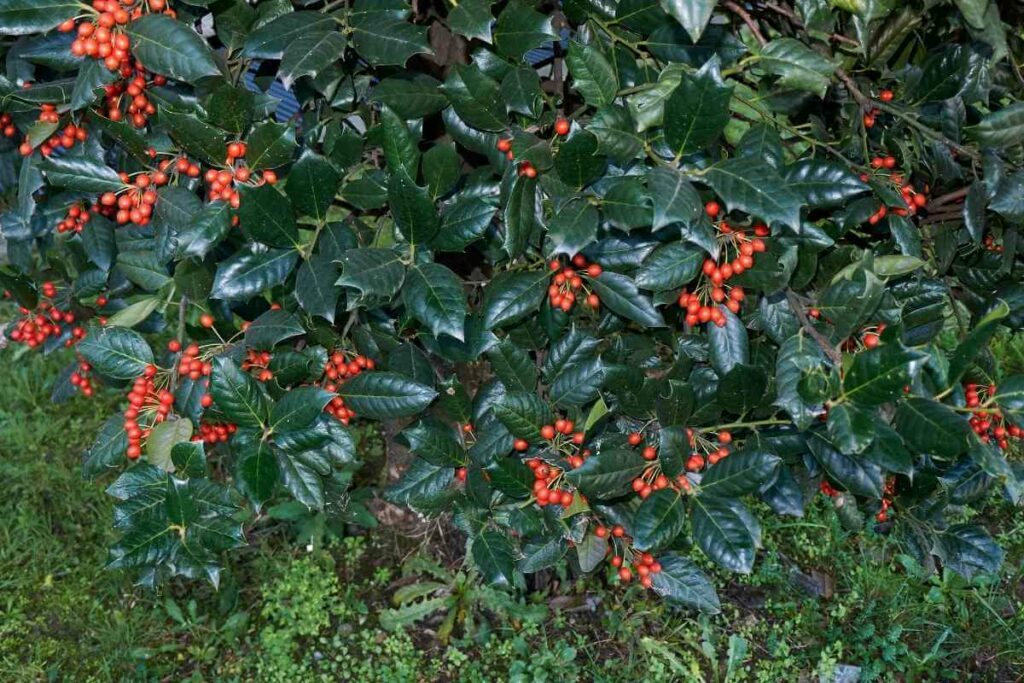
It has small white springtime flowers which give rise to bold red berries that are popular with wildlife.
The slow growth means that it will not overwhelm your garden, with only 15 centimeters of height gained annually.
As a tree that is native to the UK, you can grow Holly just about anywhere and it will thrive.
7. Holm oak
Holm oaks (Quercus ilex) or Holly oak is an oak tree species that is evergreen and native to the Mediterranean.
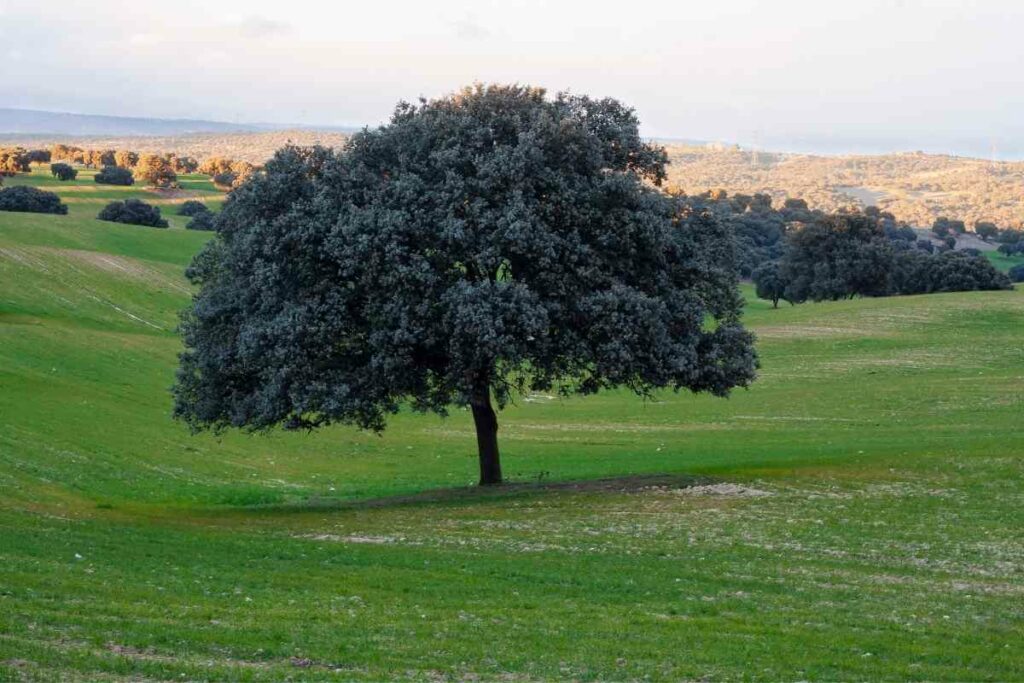
It is called a holly oak because its leaves look a little like holly leaves.
Mature holly oaks produce lots of seeds that have led to the tree becoming established across southern England.
They do particularly well in coastal areas as they tolerate both salt and drought.
They need good drainage and do not fare well in waterlogged soil or frosts.
The Holm oak can be grown as a tree or used as hedging stock or in topiary.
If you are planning on planting an oak tree in your garden, why not read the article “Oak tree growth rate” which includes a handy chart that outlines the stages of oak tree growth.
Read More
8. Yew
Taxus baccata is an ancient evergreen tree species that is native to the UK.
It is remarkably long-lived and also extremely toxic, making it the subject of folklore.
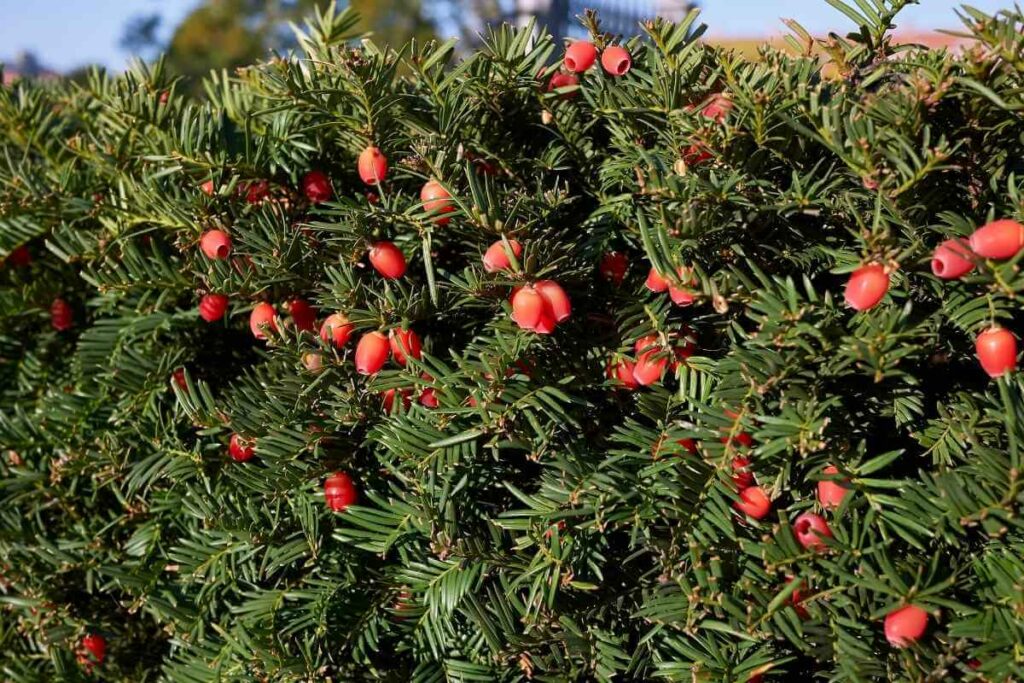
The oldest trees in Britain are yews with the Fortinghall yew, the nation’s oldest tree, being as much as 5,000 years old.
These are hardy trees that will beautifully wall off areas of your property with their dense, needle foliage.
Yews are fruiting with a fleshy hollow berry that contains a toxic seed.
Handling and trimming yews must be undertaken with extreme caution, as almost all parts of a yew tree are toxic apart from the flesh of the berries.
If used in hedging or topiary, yew shapes beautifully, with a hard cutback stimulating fresh growth. Seasoned yew wood also makes excellent firewood.
9. Leyland Cypress
The Leyand cypress, also known as Leylandii, × Cuprocyparis, or Cupressocyparis leylandii, is the coniferous tree you want to plant if you want to completely block out your garden from unwanted observers, wind, noise and light.

If you choose to plant this hedging tree, prepare yourself for vigorous growth. This evergreen tree can reach a height of 40 meters within 40 years!
The foliage of the Leyland cypress is soft and shaggy with three having a classic coniferous shape that tapers at the top.
It will thrive just about anywhere and you will need to work hard to keep it under control with twice-yearly clipping.
If you are planting Leylandii as a hedge, keep trees a distance of 60 to 150 centimetres apart.
10. Evergreen Magnolia
An evergreen Magnolia variety like M. grandiflora will add a touch of luxe to any garden space.
Also known as the Southern Magnolia, this striking evergreen tree will be a centerpiece in any garden.
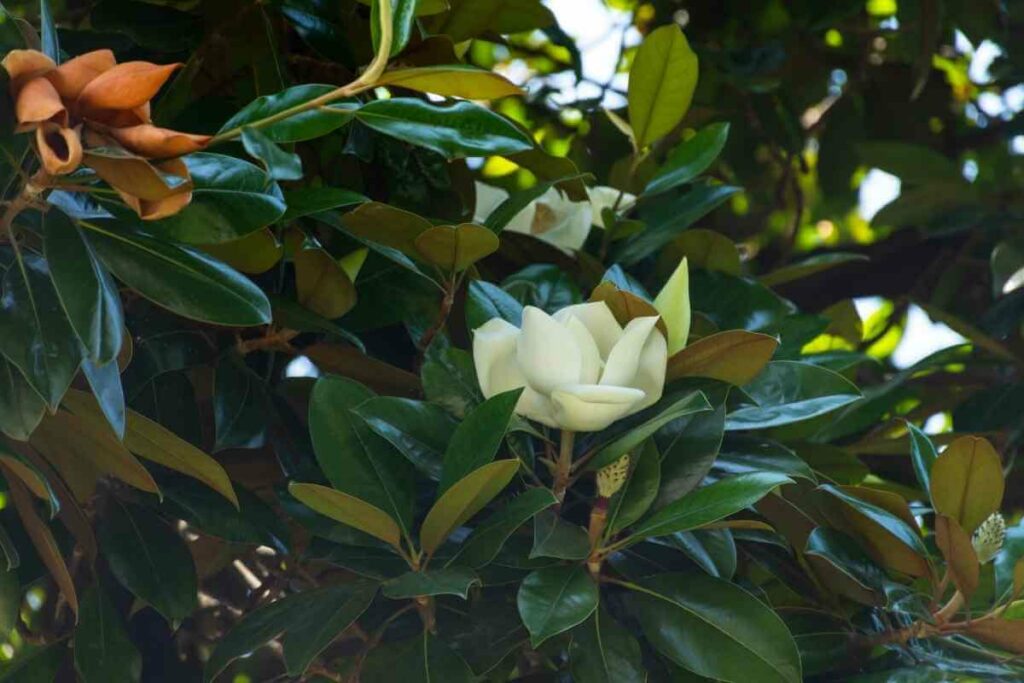
It is famed for its bowl-sized white flowers that can be up to a foot in diameter.
They have a beautiful fragrance and long flowering period that will enhance your garden in the summer months.
The foliage is similarly striking with rich dark glossy leaves that have a contrasting velvety underside.
Remember This: Evergreen magnolias fare best in temperate or warm climates, though they can adapt to frosts in some cases.
11. Privet
Privet varieties like the common privet or golden privet (Ligustrum ovalifolium ‘Aureum’) enjoy bright green and yellow foliage that is typical of the classic English hedge.
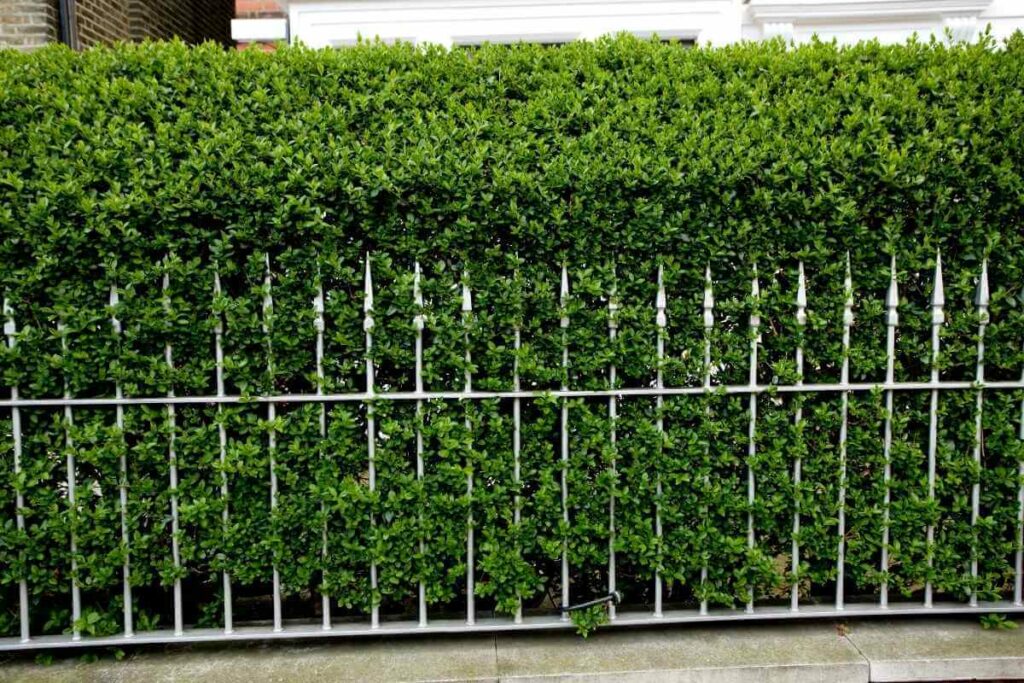
If you are keen on making local wildlife welcome in your garden, this hedge, which can grow up to 4 metres in height, offers crevices for nesting and summer flowers for pollinators.
This is an ideal evergreen for screening will give year-round privacy in most sites that offer adequate moisture.
When Should I Plant Trees That Don’t Lose Leaves?
Gardeners and landscapers usually plant evergreen trees and shrubs between early autumn and late winter.
Early autumn is best for planting hedges with trees like yew, privet or box.
Soil condition is critical, and young trees should not be planted in frozen or waterlogged soil.
How to Plant an Evergreen Hedge
- Prepare the soil by digging and breaking up clods in an area that is just under a metre wide. The depth required for planting a hedge is usually one spade width.
- Ensure that the shrubs have appropriate spacing usually up to 1.5 meters between each plant.
- Spread and trim dead roots of the tree to be planted.
- Mix a good quality compost and organic matter to the soil for the backfill.
- Once planted, add a layer or mulch to the base of your trees to prevent weeds.
Rounding Up
You have a variety of options for fencing or hedging your property with evergreen trees that provide the lustrous foliage that guarantees privacy.
When planting trees and hedges, be prepared to keep annual growth under control with a schedule of trimming that controls and shapes the hedges.
Be patient, as it may take several years for a hedge to achieve its desired size and shape.
